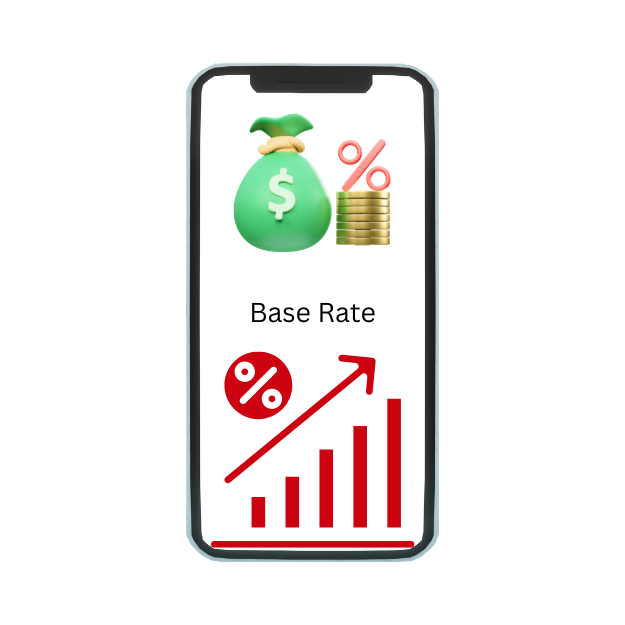Fibonacci Retracement levels are horizontal lines that indicate possible support and resistance levels. It works when the market is trending. It is considered as the predictive technical indicator since they attempt to identify where the price may be in the future. This theory states that after the price begins a new trend direction the price will retrace or return partway back to a previous price level before resuming the direction of its trend.
Fibonacci retracement is a widely used technical analysis tool in trading and the share market, based on the Fibonacci series. This mathematical sequence gives rise to Fibonacci levels, including the golden ratio (61.8%), which are pivotal in identifying support and resistance. Traders use the Fibonacci retracement tool to draw key levels on price charts, starting from a swing high to a swing low, or vice versa. Fib tools like the retracement indicator help in analyzing price movements, while retracement settings allow customization for strategy optimization. By leveraging the best Fibonacci levels, such as 38.2% and 61.8%, traders can develop effective Fibonacci trading strategies to anticipate market reversals or continuations. Patterns like Fibonacci retracement and extensions form the basis of Fibonacci pattern trading, providing insights into stocks and market behavior. The Fibonacci indicator is crucial in detecting fib levels, aiding traders in making informed decisions about entry and exit points in the market. Understanding how to use Fibonacci retracement in trading is essential for maximizing profit potential in Fibonacci stocks, making it an integral part of modern technical analysis.
What is Fibonacci Retracement?
The Fibonacci Retracement uses the Fibonacci sequence’s mathematical link to plot percentage retracement lines. These retracement levels provide support and resistance levels that can be used to target price objectives.
Fibonacci Retracements are based on the designated Fibonacci Retracement numbers and associated Golden Ratio. In mathematics Fibonacci series is a sequence of numbers whose value is the sum of the preceding two numbers. The Fibonacci Retracement series is
0, 1, 1, 2, 3, 5, 8, 13, 21, 34, 55, 89, 144, 233, 377, 610.
Fibonacci sequence
The Fibonacci sequence is a sequence in which each number is the sum of the two preceding ones. These series are named after the Italian mathematician Leonardo of Pisa who is also known as Fibonacci.
What are Fibonacci Retracement Levels?
- Fibonacci Retracement Levels alert the traders or investors about a trend reversal, resistance area or support area. Retracements are based on the prior move. Fibonacci numbers were initially calculated based on the mathematical concept derived centuries ago. Each level is associated with a percentage. The percentage is how much of a prior move the price has retraced.
- The Fibonacci Retracement levels are 23.6%, 38.2 %, 61.8% and 78.6%. This indicator is useful as it can be drawn between any two significant price points such as high and low. Fibonacci numbers are found throughout the nature. These numbers have relevance in the financial markets.
- These levels should not be relied completely as it could be dangerous to assume that the price will reverse after hitting a specific Fibonacci Level.
- Despite the name Fibonacci sequence , it was developed and used by Indian Mathematicians, most notably Indian Mathematician Acarya Virahanka is known to have developed Fibonacci numbers. It is estimated that Fibonacci numbers existed in Indian Society as early as 200 B.C.
What Do Fibonacci Retracement Levels Tell You?
- Fibonacci Retracement are used to place entry orders, determine stop loss levels or set target price. Analytical traders usually wait till the stock corrects itself and settle down to a stable sale price. There is no formula to calculate Fibonacci Retracement.
- One of the characteristics of Fibonacci Retracement is that it is approximately 1.618 times greater than the preceding terms, and the sequence continues infinitely. This common relationship between every number in the series is the foundation of the ratios used by technical traders to determine retracement levels.
- The key Fibonacci Ratio of 61.8% is found by dividing a number in the series by the number located two spots to the right. For example 21 divided by 34 equals 0.6176 and 55 divided by 89 equals about 0.6176.
Formula for Fibonacci Retracement Levels
Fibonacci Retracement Levels do not have any formula. When the indicators are applied to the chart the user chooses two points. Once the two points are chosen the lines are drawn at percentages of that move.
How to Calculate Fibonacci Retracement Levels
As discussed there is no specific formula to calculate Fibonacci Levels. They are simply percentages of whatever price range is chosen. The Fibonacci retracement levels are all derived from this number string. After the sequence gets going, dividing one number by the next number yields 0.618, or 61.8%. Divide a number by the second number to its right, and the result is 0.382 or 38.2%. Traders draw them on a chart by identifying the trend and considering the potential price range for a specific asset at support and resistance level.
The next step is to calculate the difference between the two price to find a target price. Then the trader has to multiply the resultant with the Fibonacci Ratio or percentage and subtract it from or add it to the high or low depending on the trend.
Based on the price trends of an asset in the financial market, traders rely on the following formula to calculate Fibonacci levels:
Uptrend Retracement = High Swing – ((High Swing – Low Swing) × Fibonacci percentage)
Downtrend Retracement = Low Swing + ((High Swing – Low Swing) × Fibonacci percentage)
Fibonacci Retracements Vs. Fibonacci Extensions
Fibonacci Retracement
Fibonacci Retracement levels are horizontal lines that indicate where a possible retracement of a price may occur. The Fibonacci Retracement levels explains some key areas of support and resistance levels to the investor. The Fibonacci retracement levels are associated with a single percentage point. These percentage points signify how much of a previous price impulse the price has currently retraced to.
Fibonacci Extensions
Fibonacci Extensions are the levels used by traders to identify potential profit targets and estimate the continuation of a price move after a pullback or reversal. Fibonacci extensions are useful in understanding reversals and possible obstructions in price continuation. Fibonacci Extensions are key areas where the price of the stock or forex pair or commodity might reverse.
Fibonacci Retracement | Fibonacci Extensions |
Indicates how deep a retracement should be | Indicates where the price will go following a retracement |
Measures Pullback of a Trend | Measures the trend impulses waves in the direction of the trend |
Provides Good entry orders and stop loss level in a trend trading strategy | Provides good reversal points in trend reversal strategies and good take profit points. |
It can be extensively used as profitable strategy with other confluences | It can be used in taking profit strategy and may also show good trend reversal points |
Fibonacci Numbers are within the initial trend (38.2% , 61.8% , 50% etc. ) | Fibonacci numbers are beyond the 100% Fibonacci level (1.618%, 123.60% etc.) |
Benefits
- Pivot point determining accuracy. With the correct setting, they can quite accurately determine the moments of price reversals at early levels or confirm a change in the trend direction at later levels.
- The tool can be used on assets of any markets and any timeframe. But there is a caveat: the higher the timeframe, the more accurate the signals. Although Fibonacci is a favorite tool of scalpers working on M1 and M5, the price noise causes errors.
- Accurate display of market psychology. Most of the technical indicators are based on a formula that reflects the patterns of previous periods. Fibonacci levels are built on both a mathematical algorithm and the psychology of the majority – this can be taken into account when building a Fibonacci trading system.
Disadvantages:
- Difficulty of determining the starting point. A trend is never perfectly flat. Even at the moment of exiting the flat, it is sometimes difficult to determine the starting point.
- False signals. They happen in this tool and there are quite many of them. And these signals are not so much false as inaccurate. The price can turn around without reaching the level or after breaking it and turn around in the middle of the zone.
- Cannot be used in Expert Advisors. It is impossible to write an automatic grid building algorithm into the EA code. Therefore, the tool cannot be used in algorithmic strategies.
How Can Traders Use A Fibonacci Retracement Level?
Traders use Fibonacci Retracement levels to determine where to place orders to enter and exit. Whenever there is a sharp move in the stock price either upward or downward, it usually has a high possibility of a pull back before continuing in the direction of the main trend. Fibonacci analysis has its application in the Stock Market and can be applied when you are expecting a correction after a sharp up move or down move.
These Fibonacci Retracement levels create good opportunity for the traders to make new positions in the direction of the trend.
How to Draw Fibonacci Retracement
Fibonacci retracement is a tool used in technical analysis to predict potential reversal levels in stock prices. To draw it, you first identify a significant high and low in the price chart. Then, use a Fibonacci retracement tool, which calculates key levels based on Fibonacci ratios (e.g., 38.2%, 50%, 61.8%). These levels act as potential areas of support or resistance.
Fibonacci Retracement Golden Ratio
The golden ratio (61.8%) is the most significant level in Fibonacci retracement, as it’s closely linked to natural patterns and human behavior. Traders often watch this level to predict reversals or continuations in price movements.
Fibonacci Retracement Strategy
This strategy involves identifying retracement levels and using them to enter or exit trades. For example, when a price retraces to a Fibonacci level, traders may look for confirmations like candlestick patterns before making decisions.
Fibonacci Series in Share Market
The Fibonacci sequence is a series where each number is the sum of the two preceding ones. In the share market, its ratios (e.g., 0.618, 1.618) are applied to predict price movements based on historical data.
Conclusion
Fibonacci Retracement levels often indicate reversal points. These levels are used as a tool within a broader strategy. Ideally this strategy is one that looks for the confluence of several indicators to identify potential reversal areas offering low risk high potential reward trade entries.
Frequently Asked Questions (FAQs): -
Fibonacci Retracement is a technical analysis tool used to identify potential support and resistance levels in financial markets. It is based on the Fibonacci sequence, where retracement levels are drawn by taking ratios of the sequence to determine possible price reversals.
The common Fibonacci Retracement levels are 23.6%, 38.2%, 50%, 61.8%, and 78.6%. These levels represent the percentage retracements of a previous price move and are often used by traders to identify potential areas where the price might reverse or consolidate.
Fibonacci Retracement is a tool based on mathematical ratios and historical price movements, so its accuracy can vary. While some traders believe in its effectiveness, others consider it to be subjective and influenced by market conditions. It’s important to use Fibonacci Retracement in conjunction with other technical analysis tools.
The effectiveness of Fibonacci retracement as a strategy depends on various factors, including market conditions, the trader’s skill level, and the integration with other indicators. It can be a useful tool when combined with other technical analysis methods, risk management, and a thorough understanding of market dynamics.






